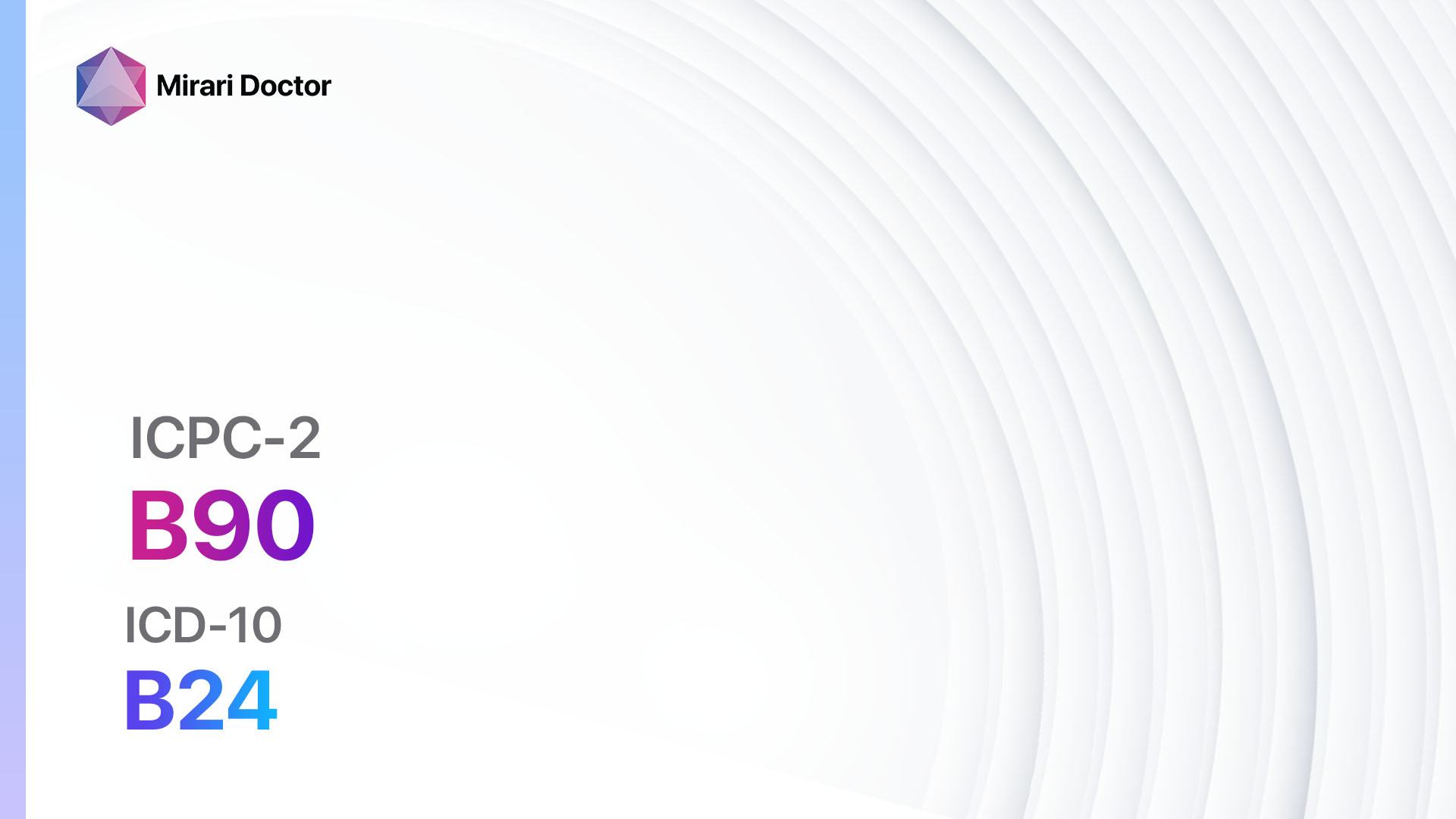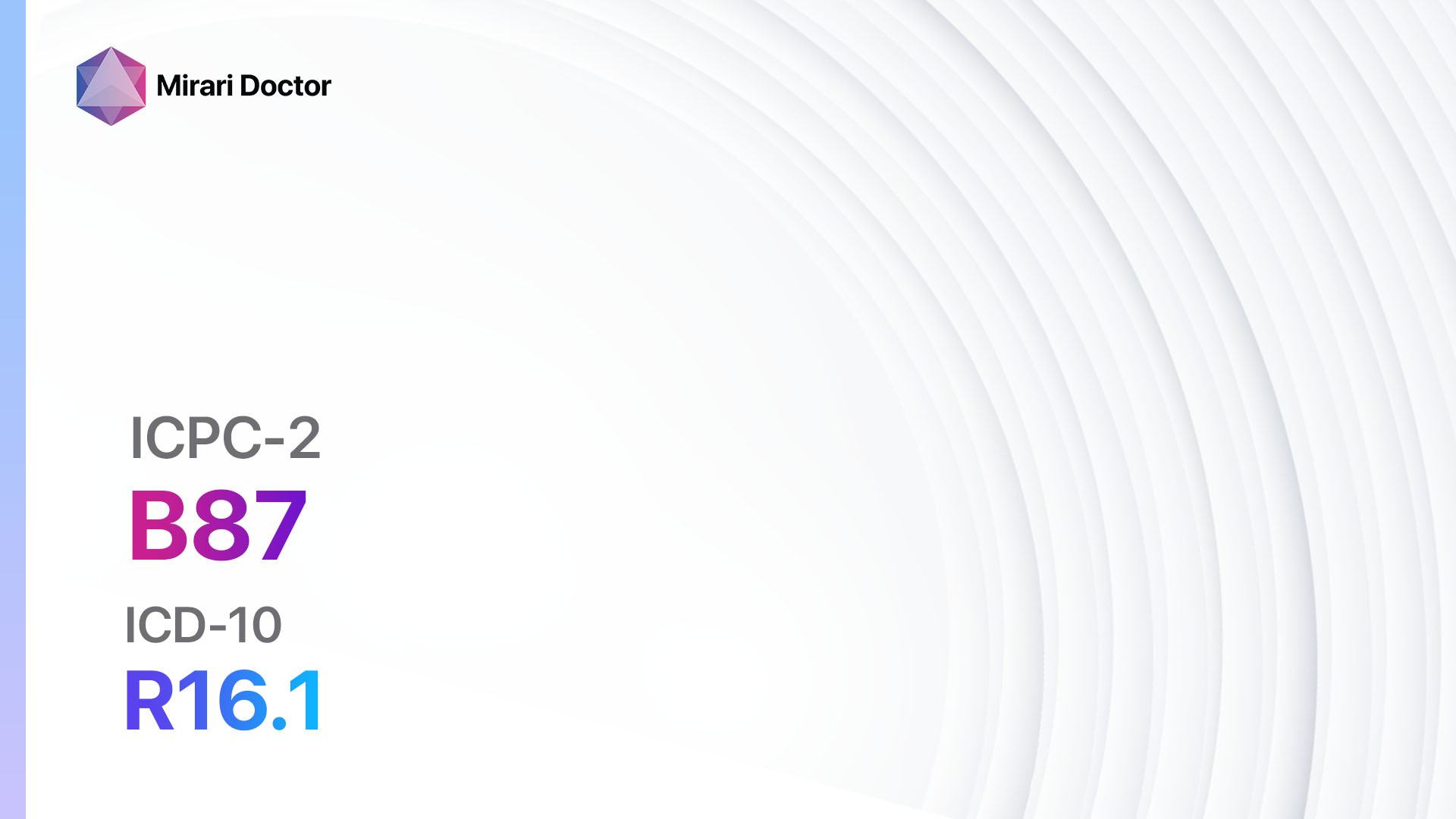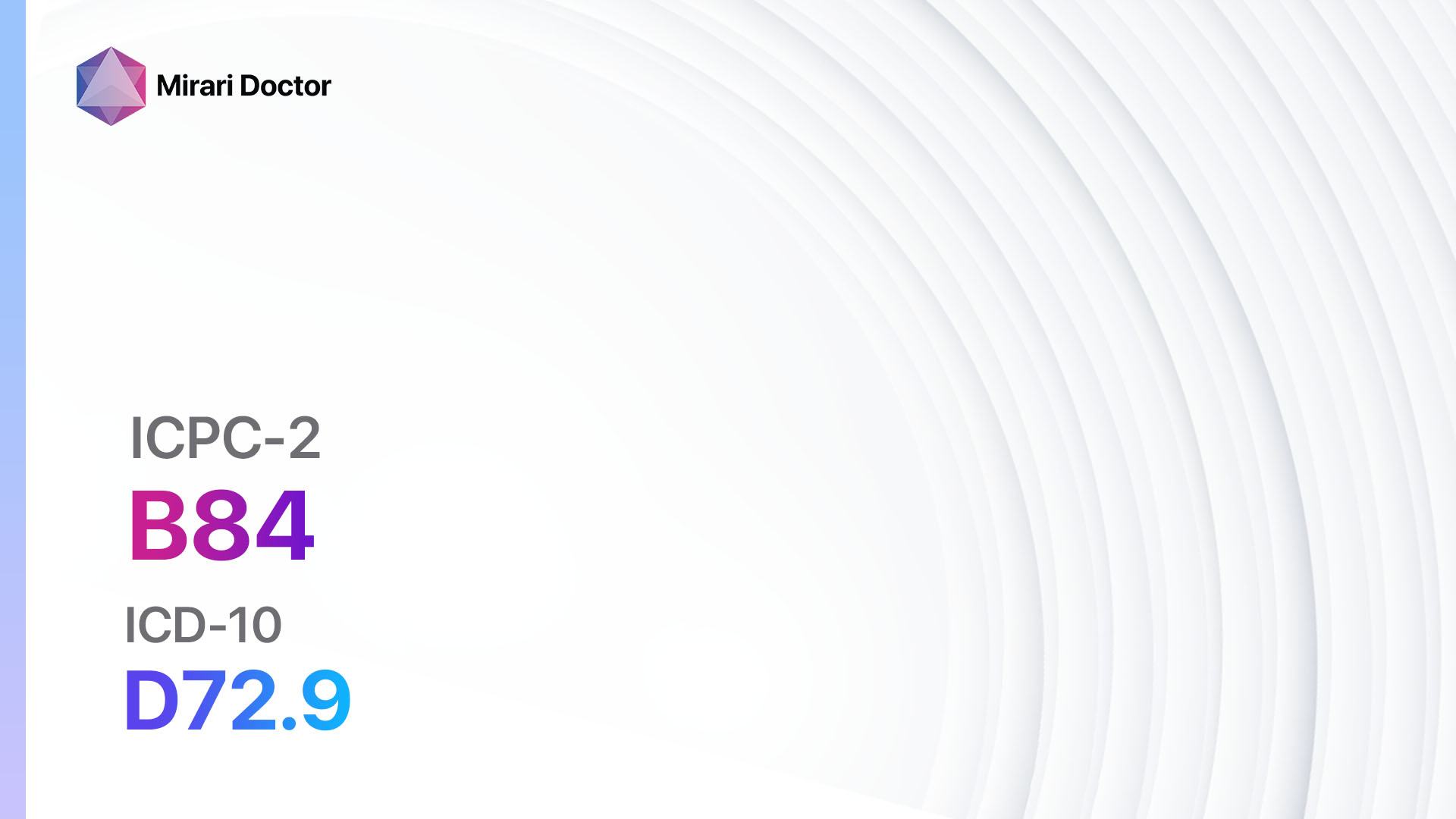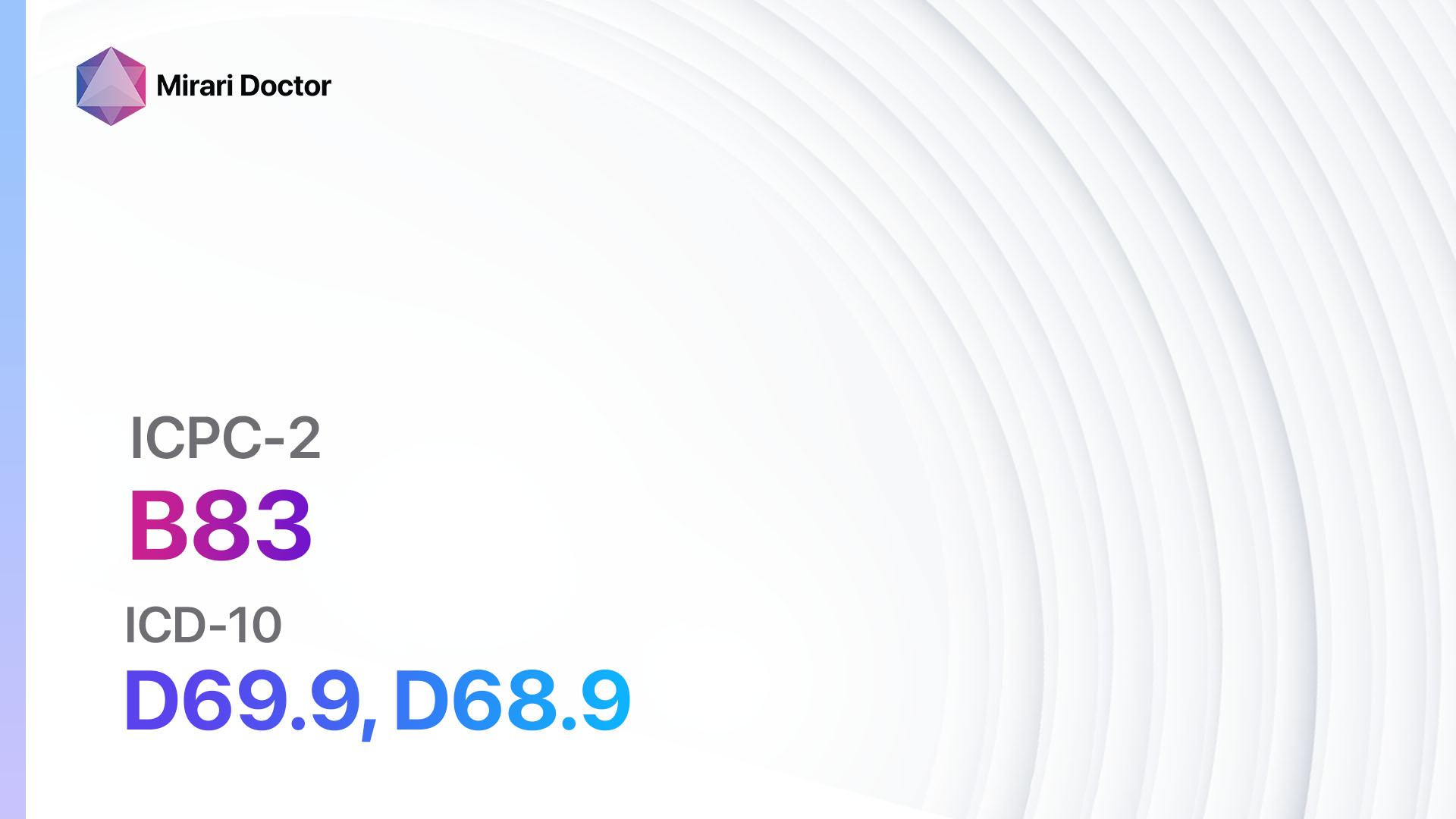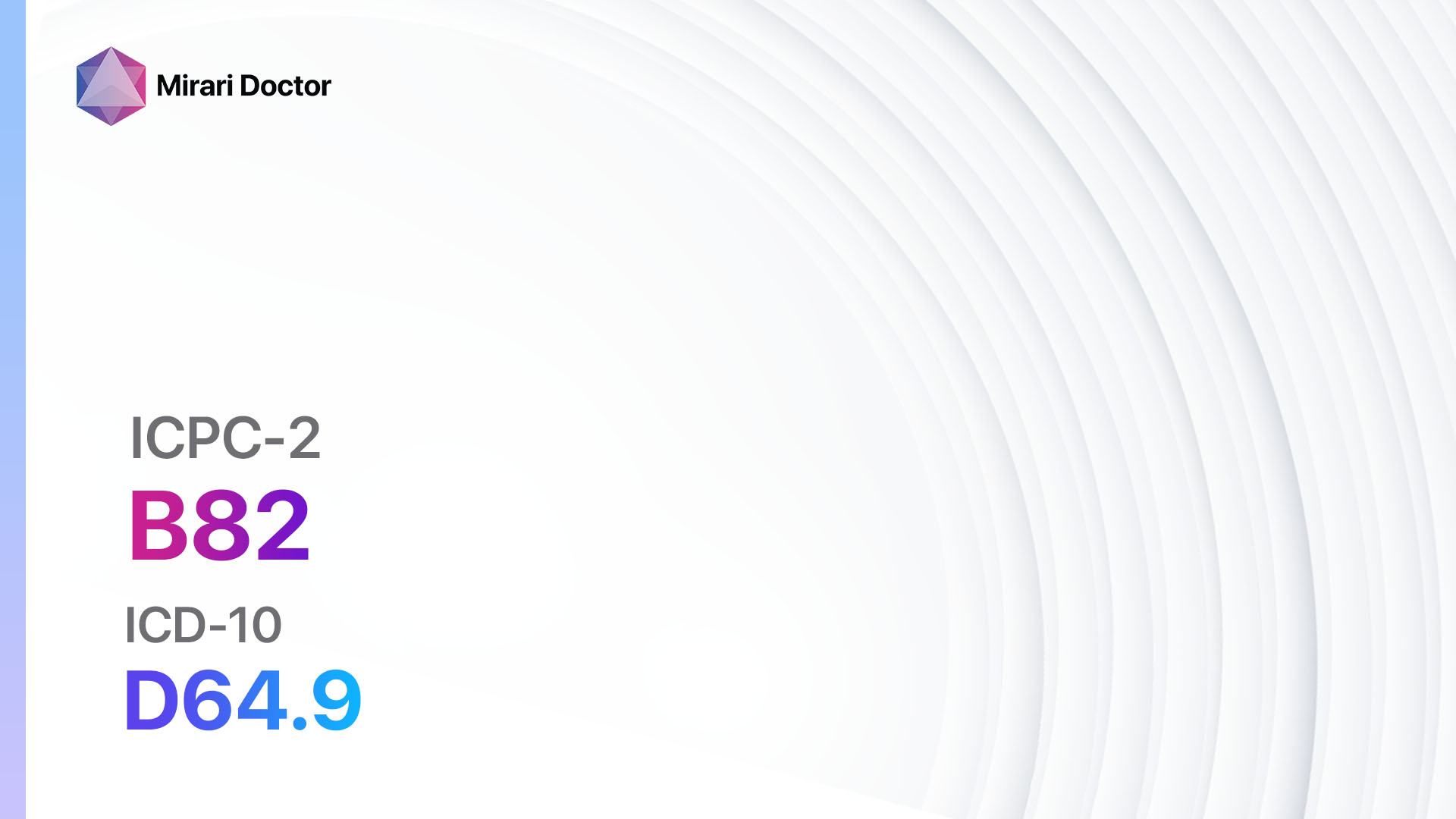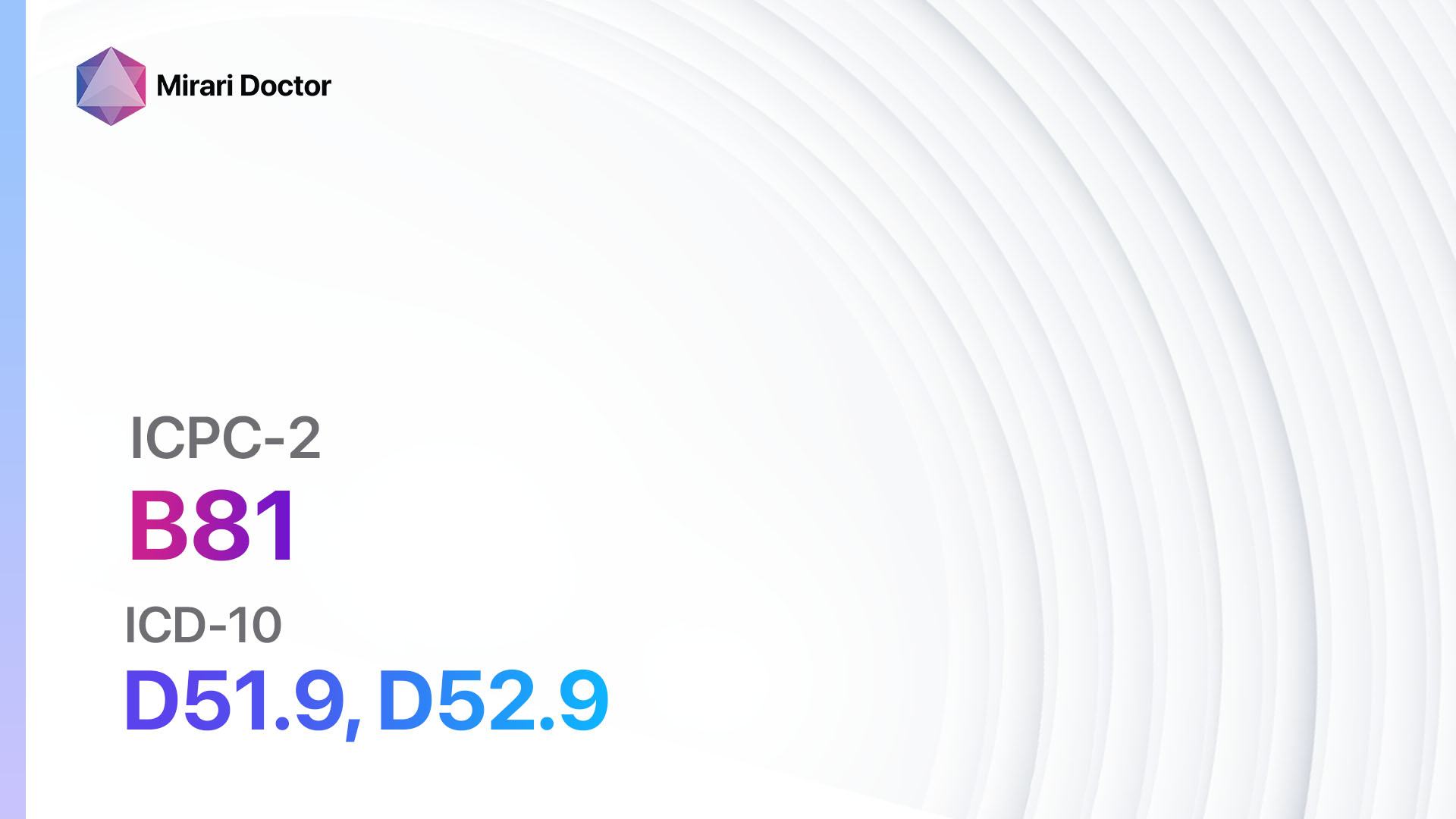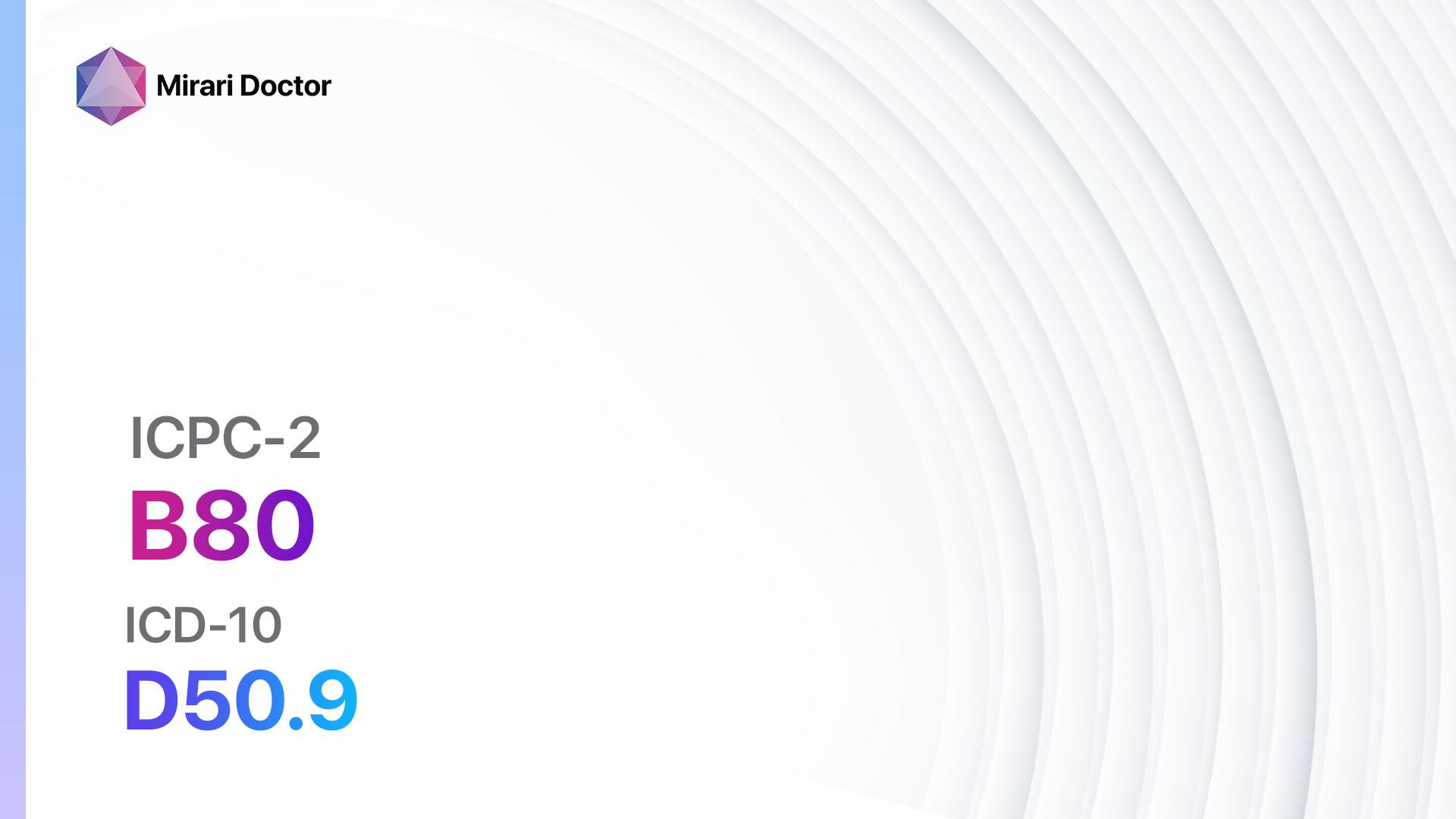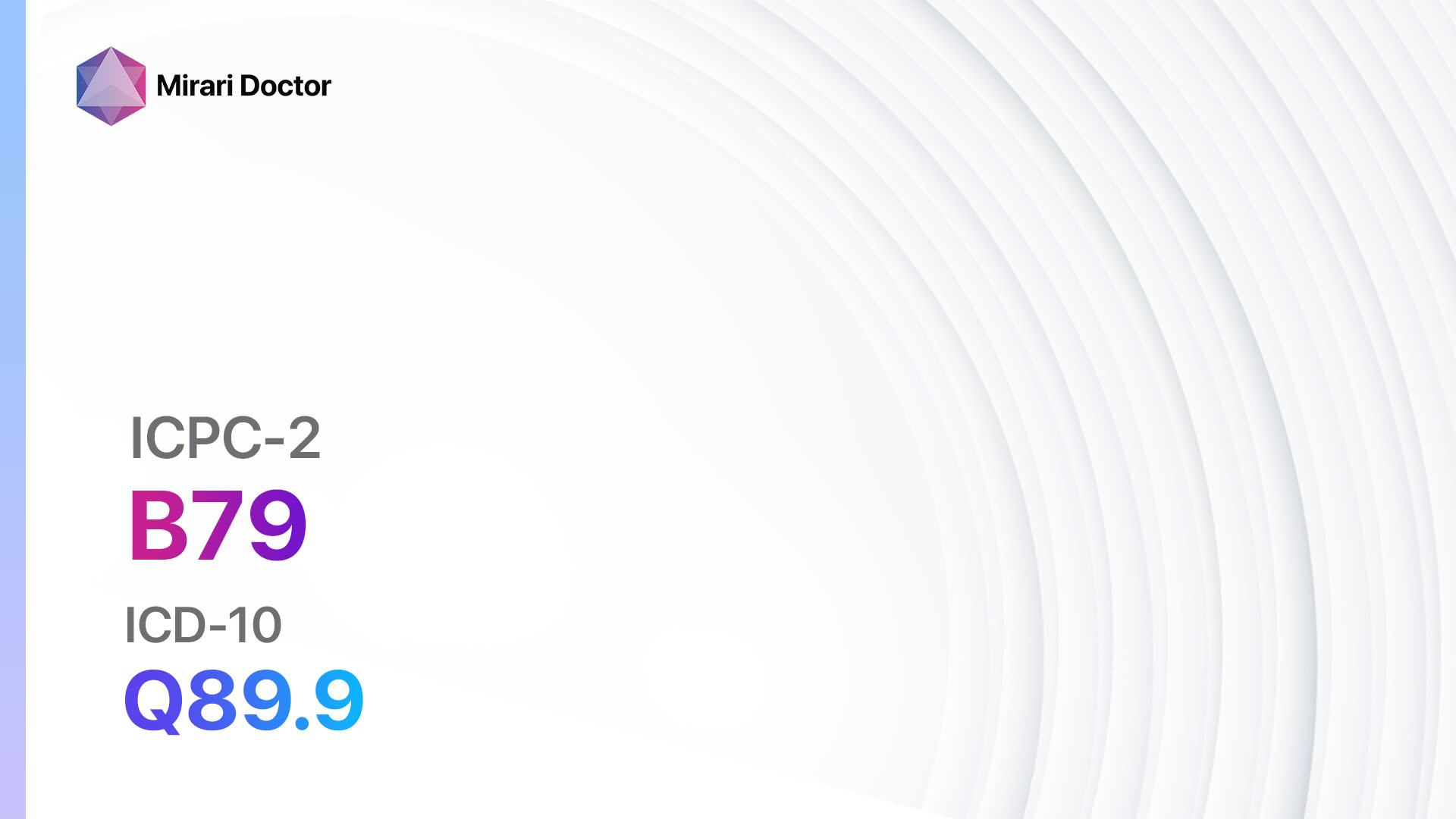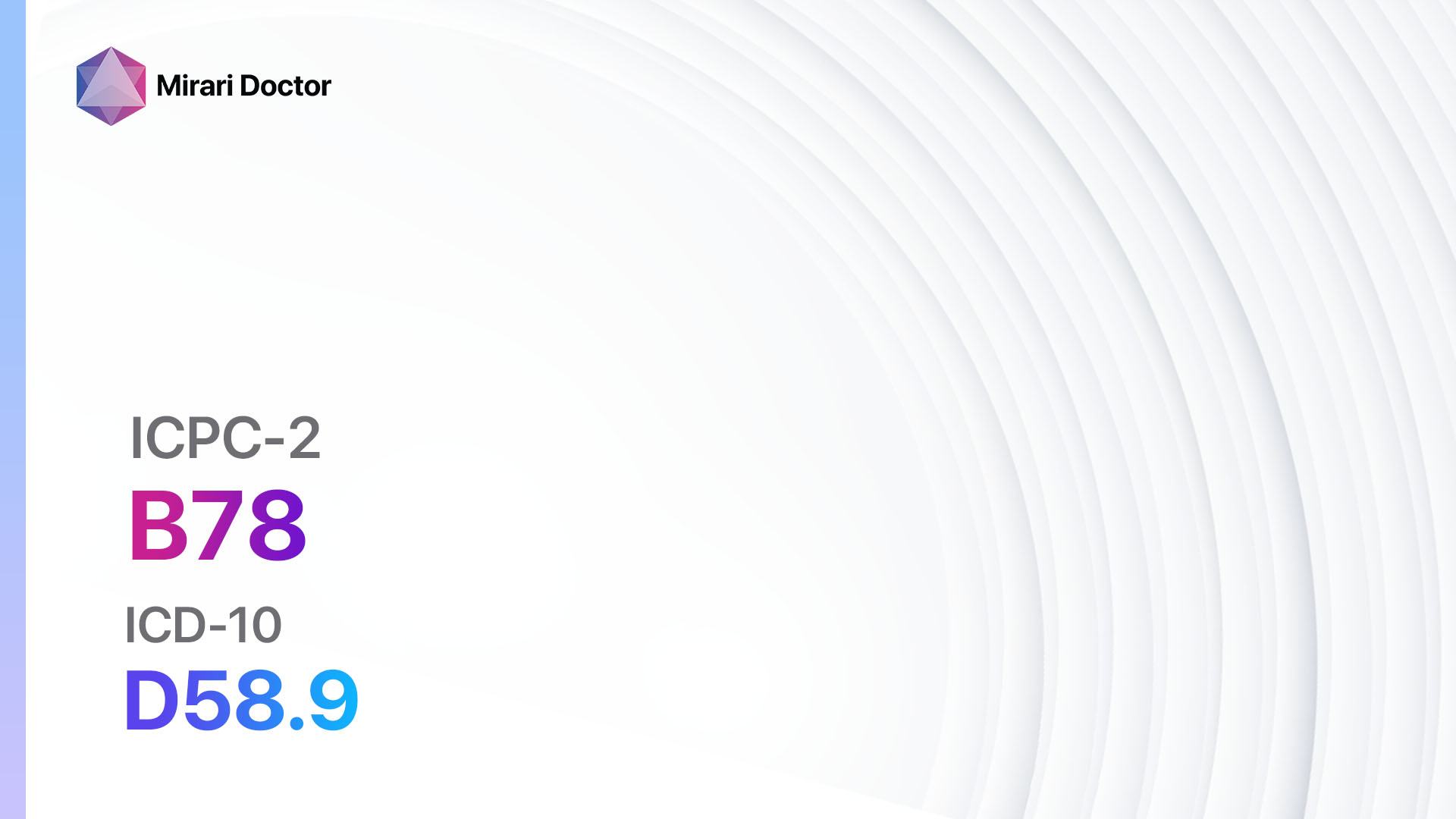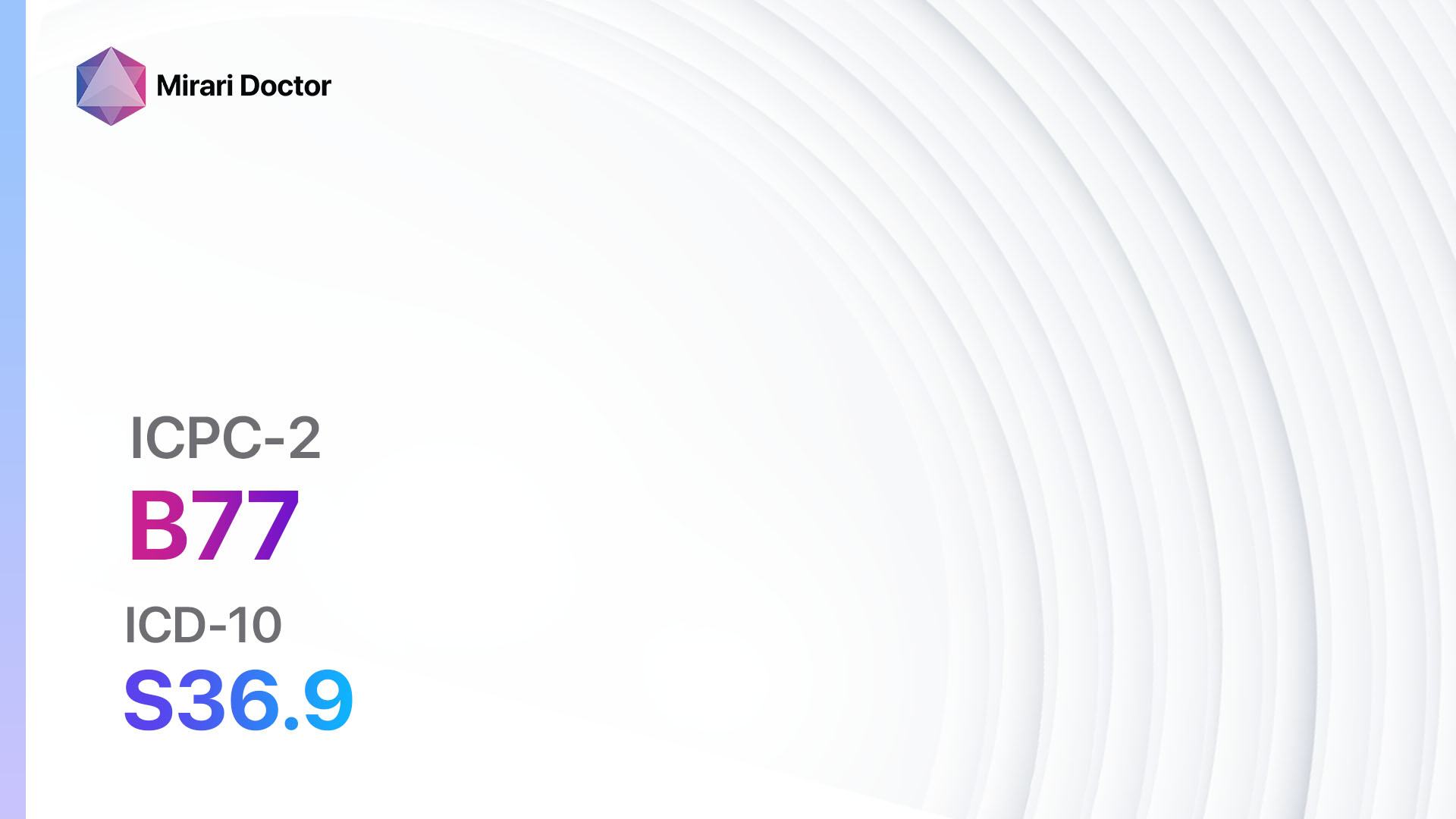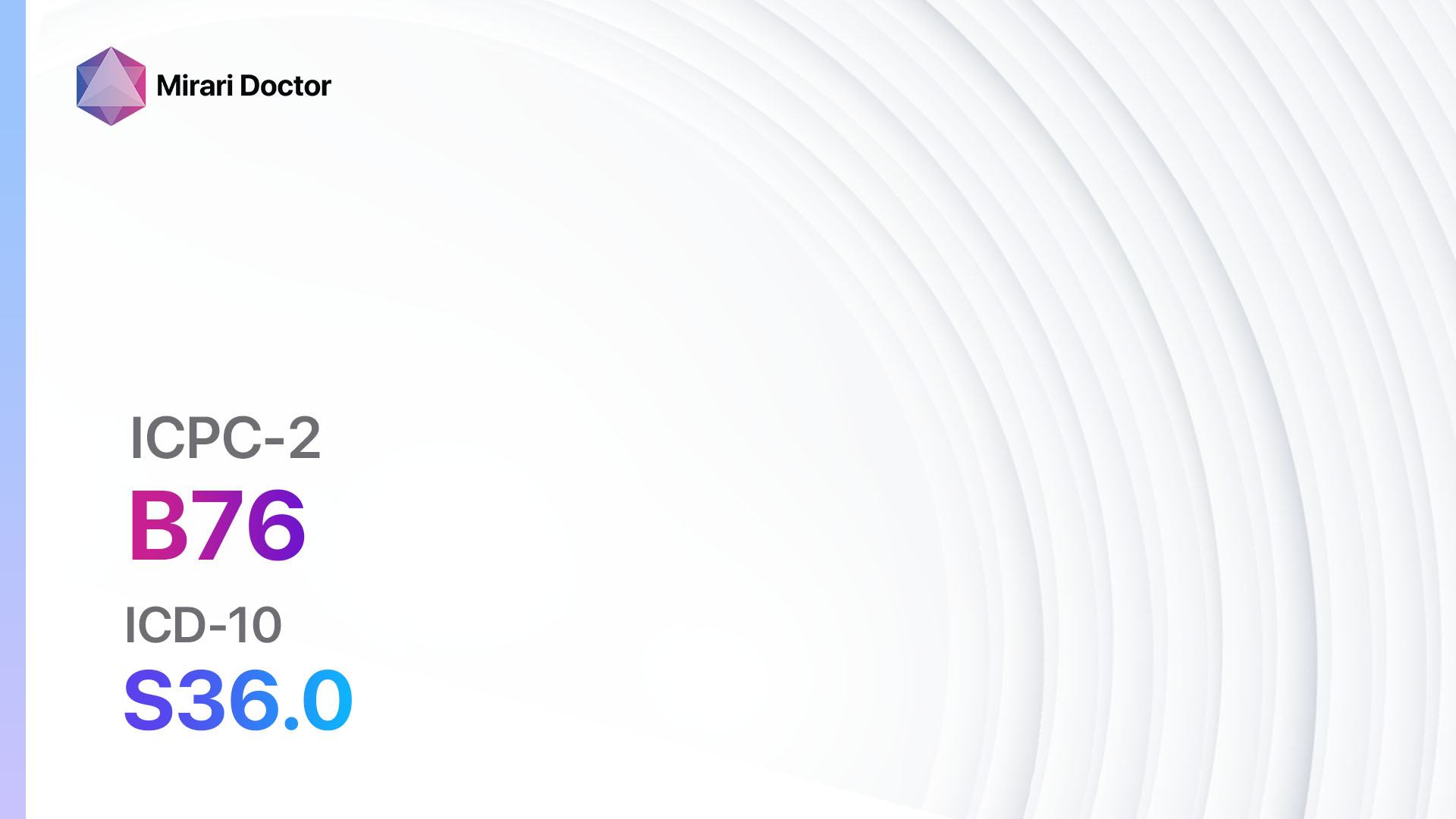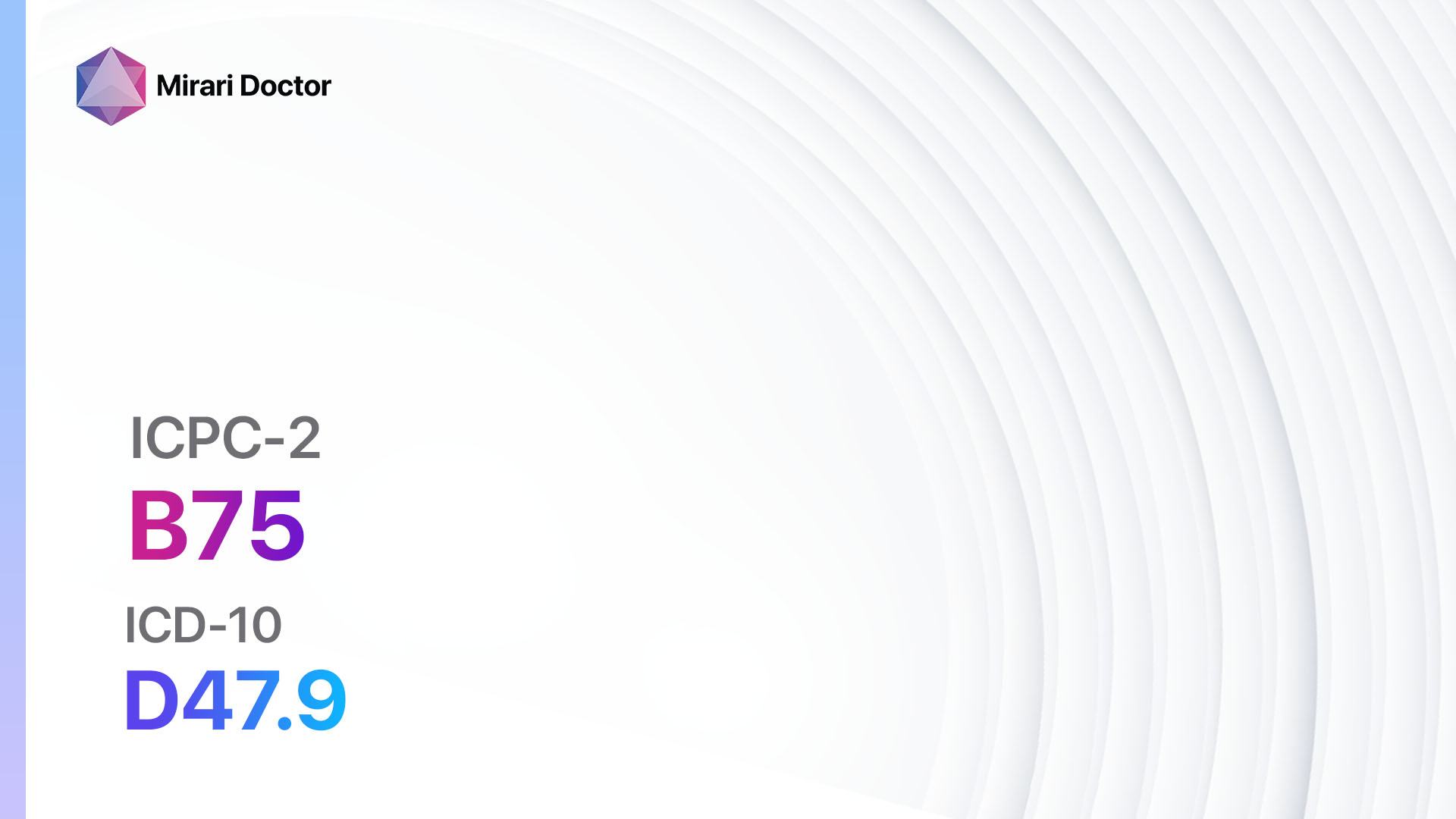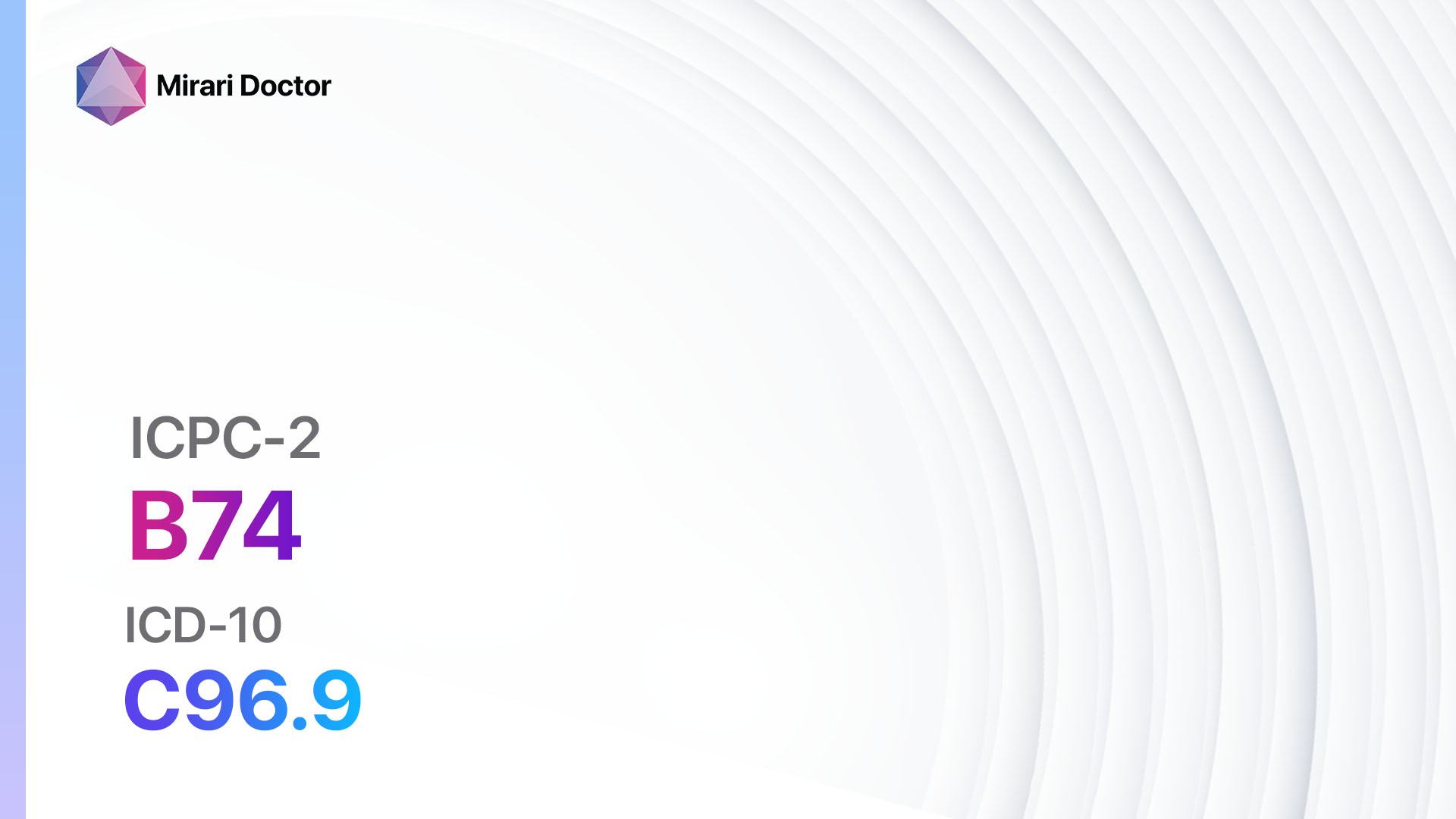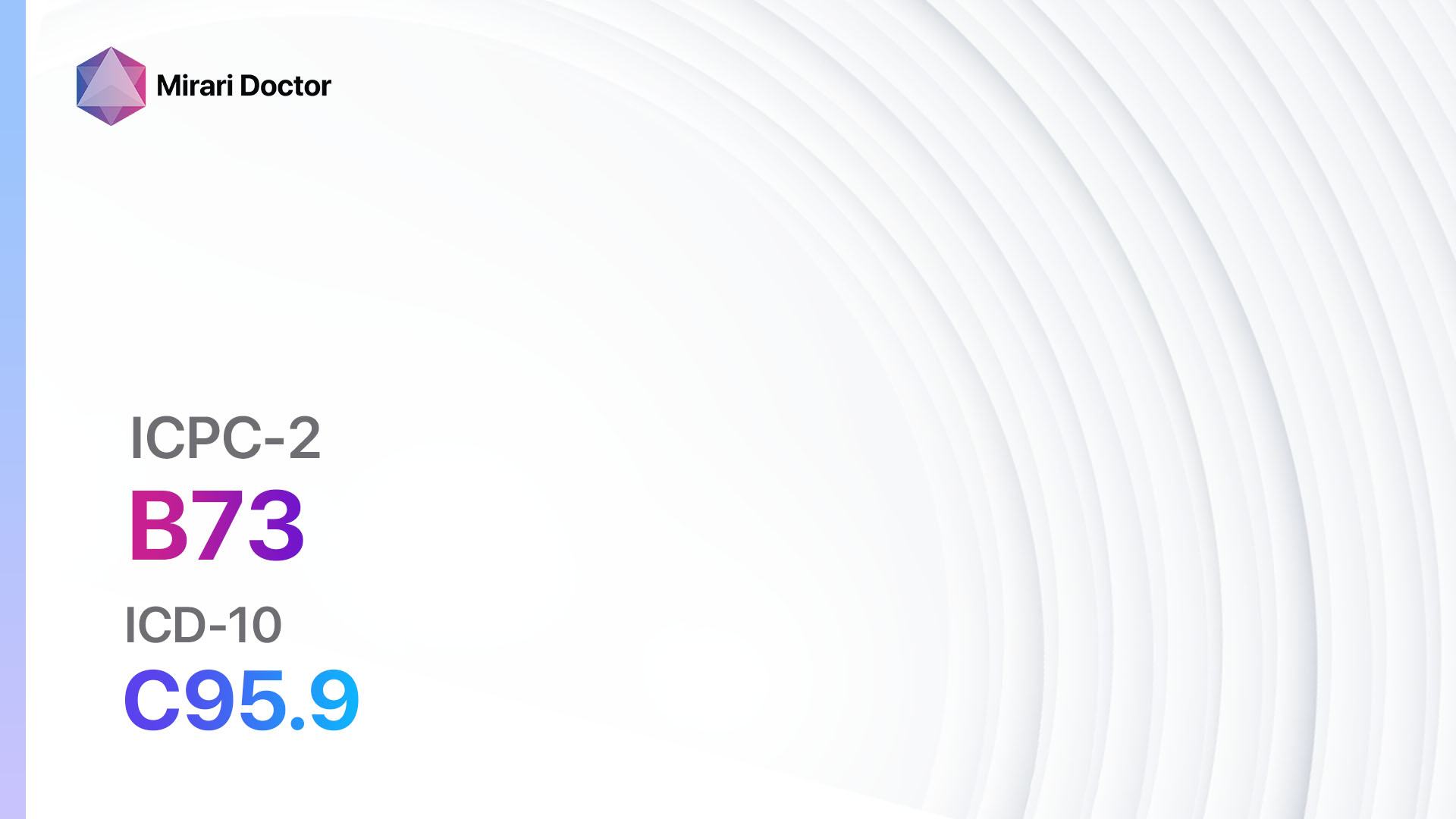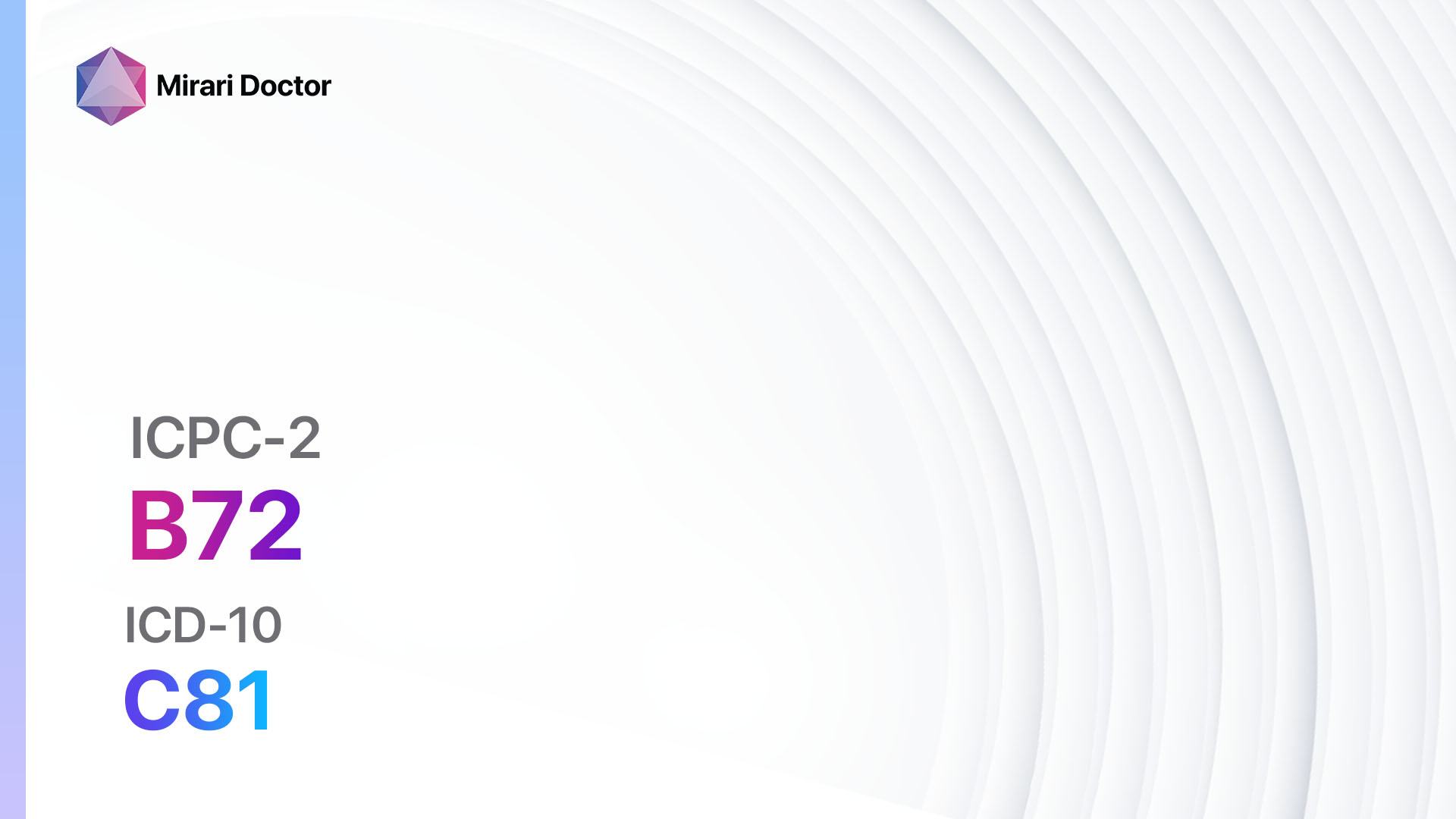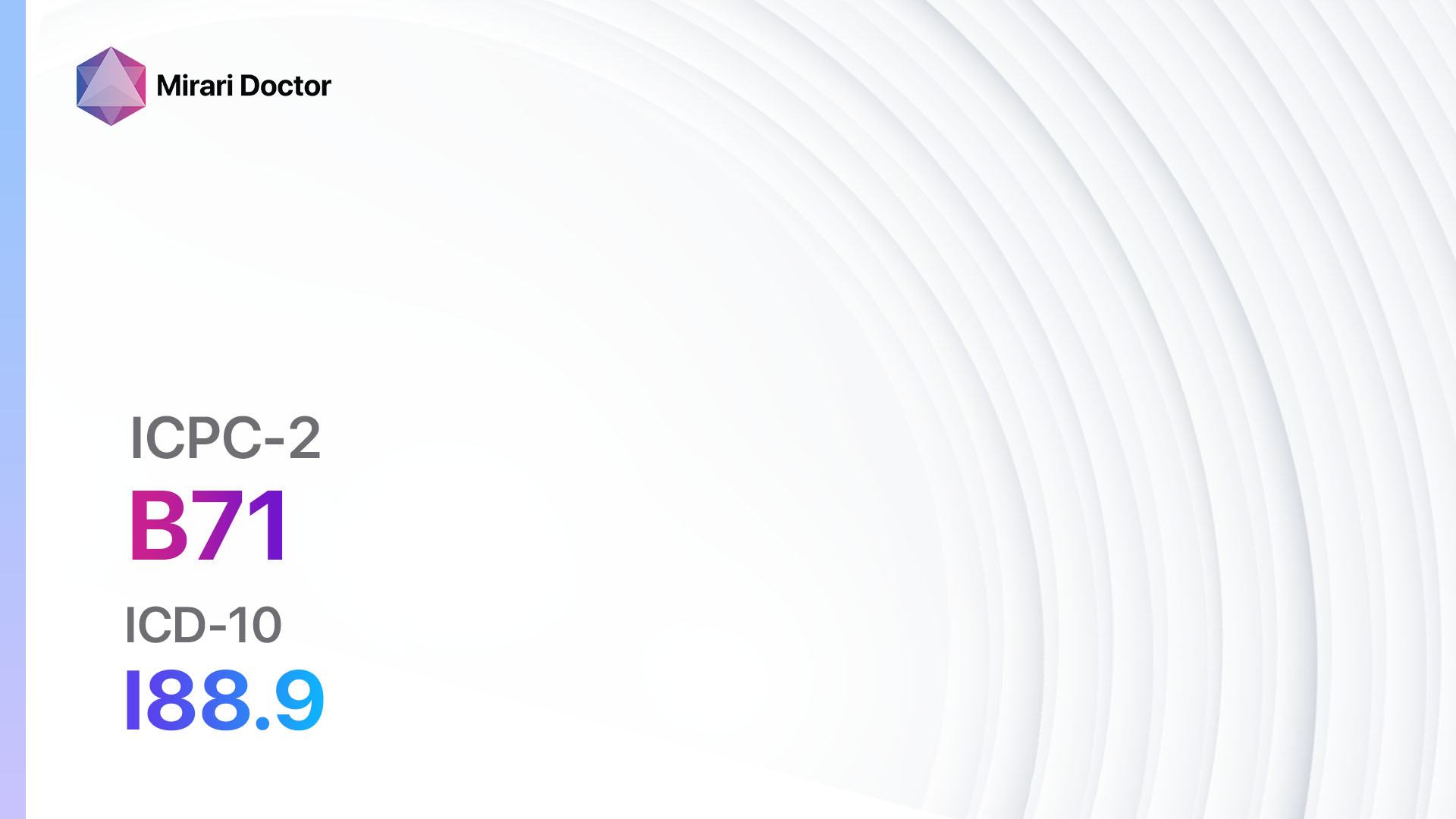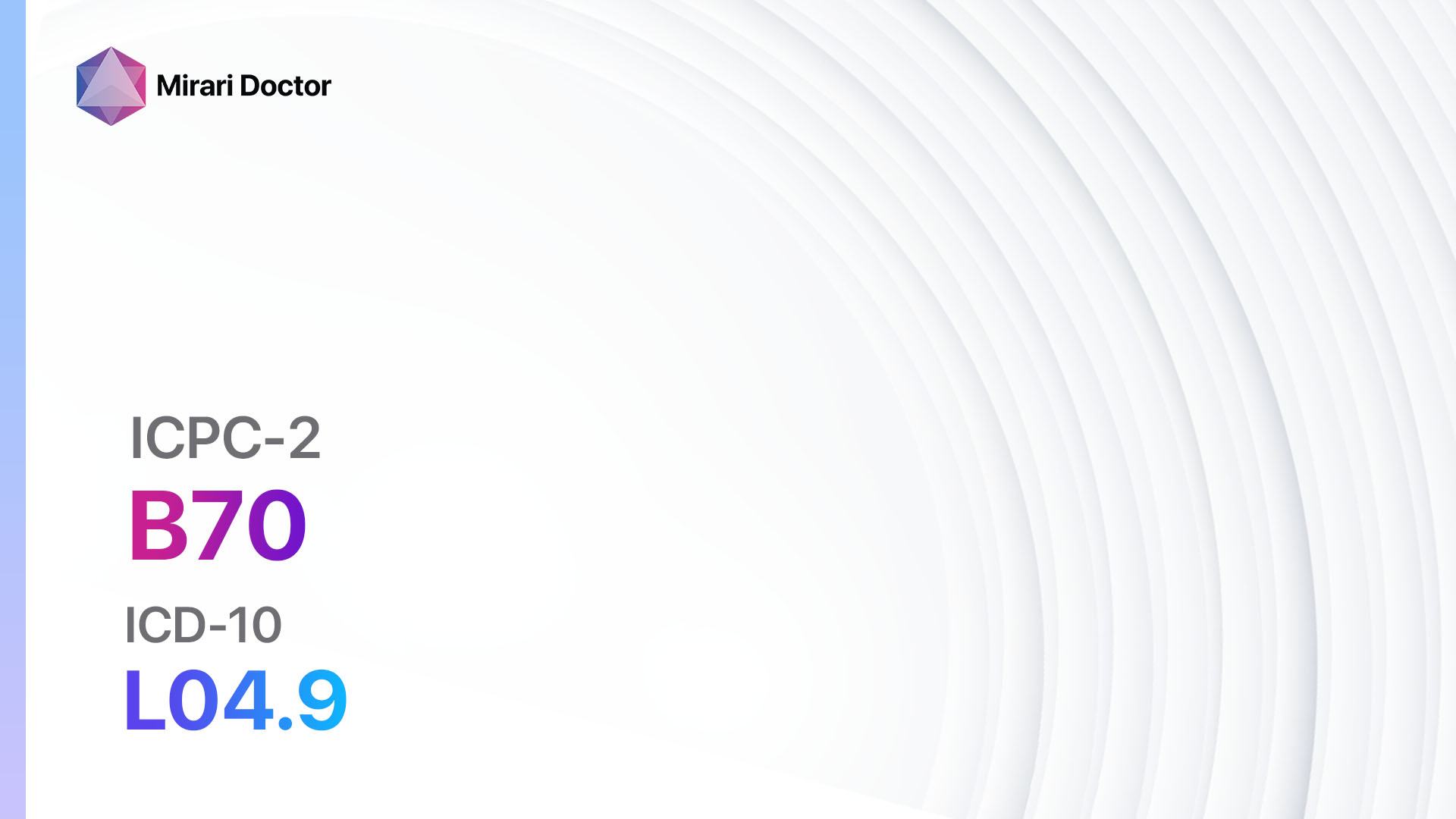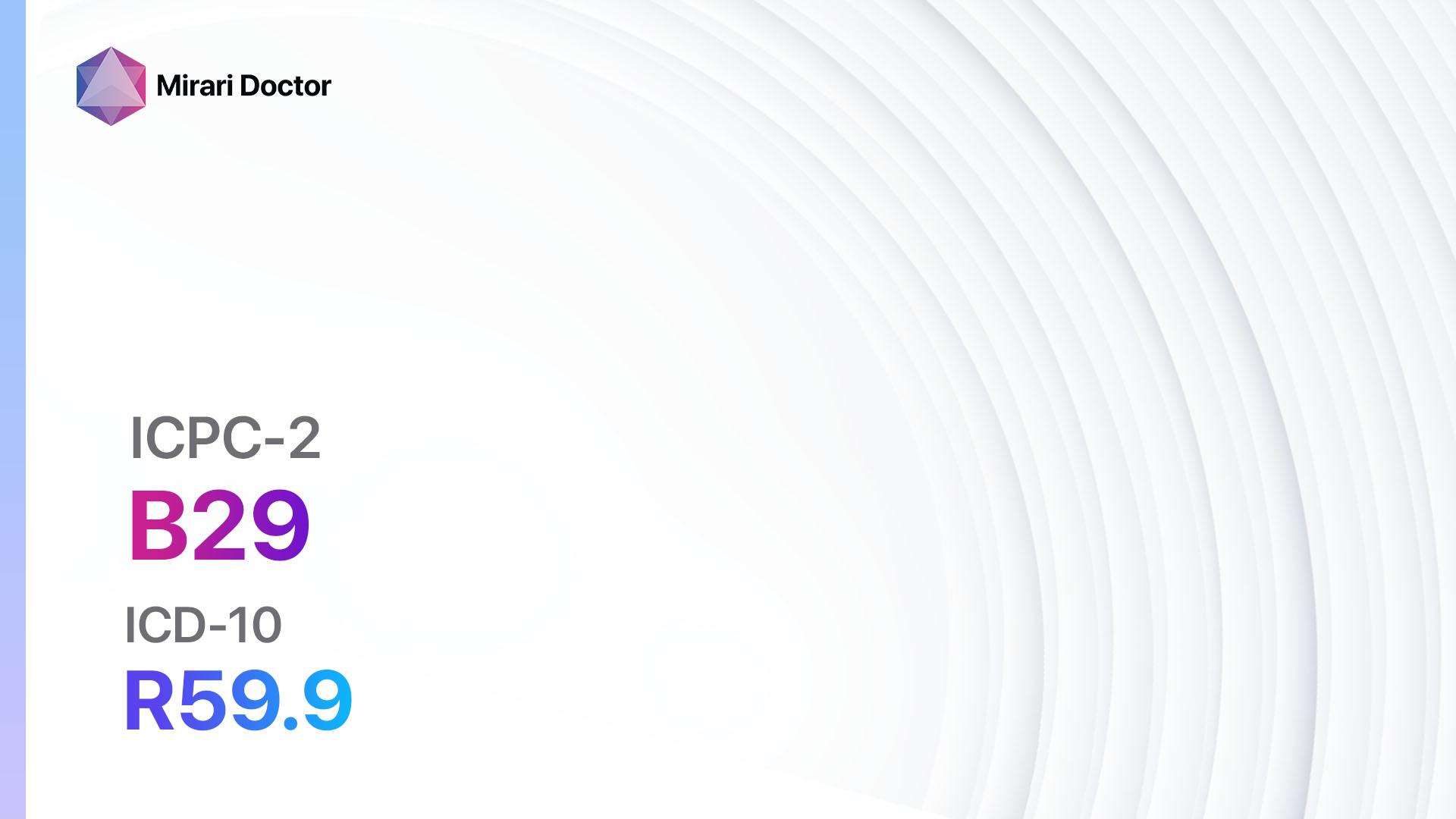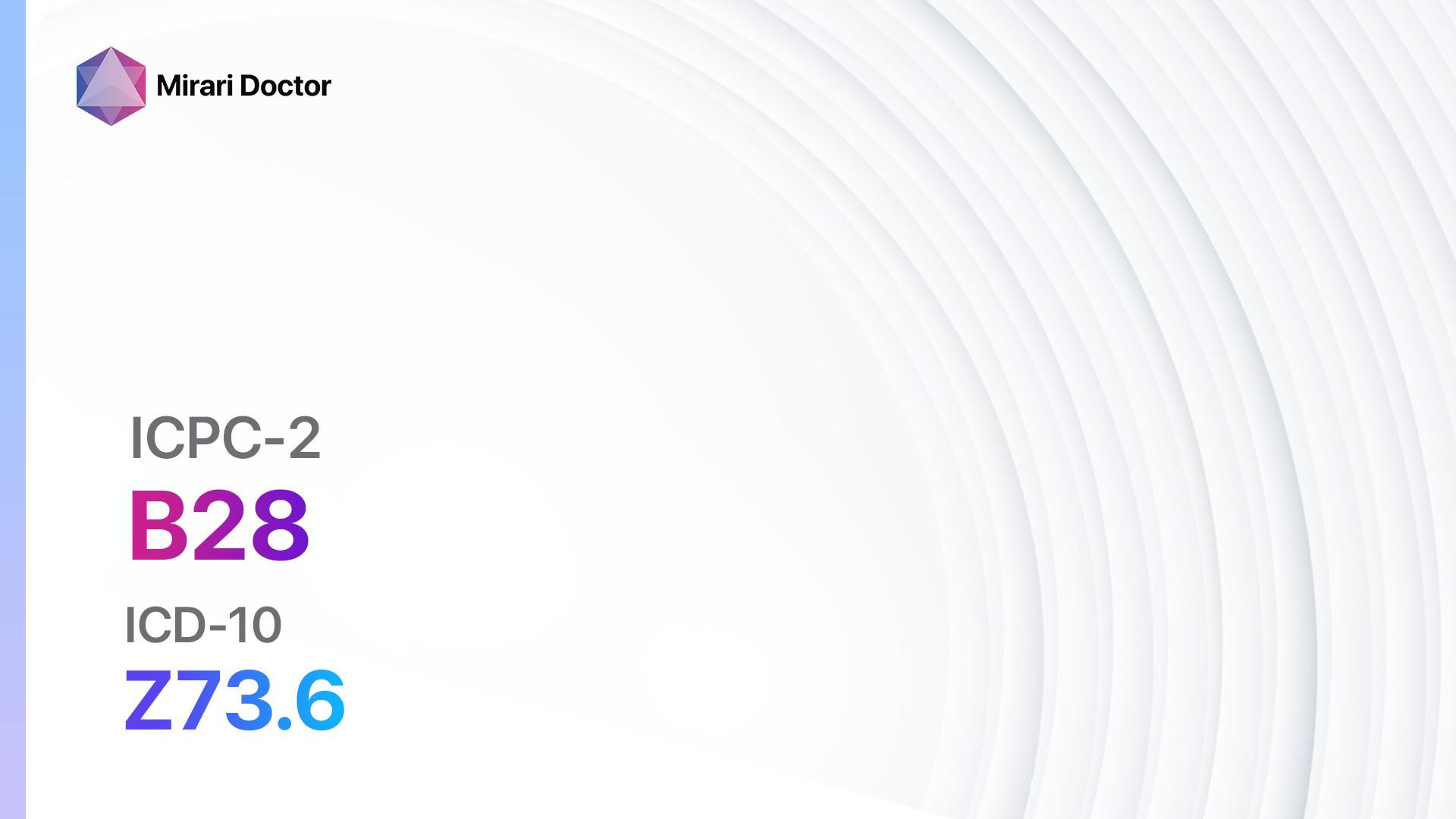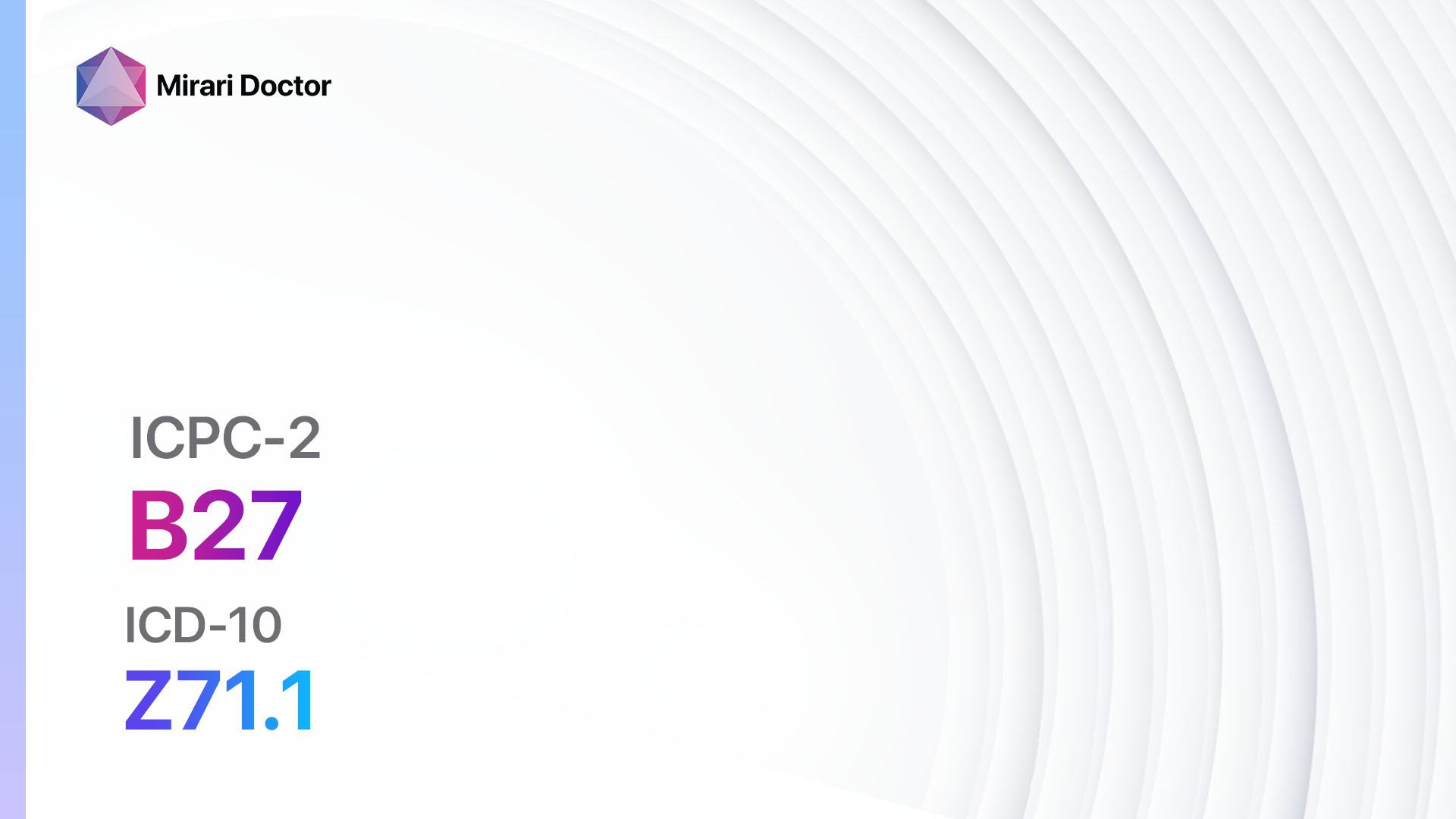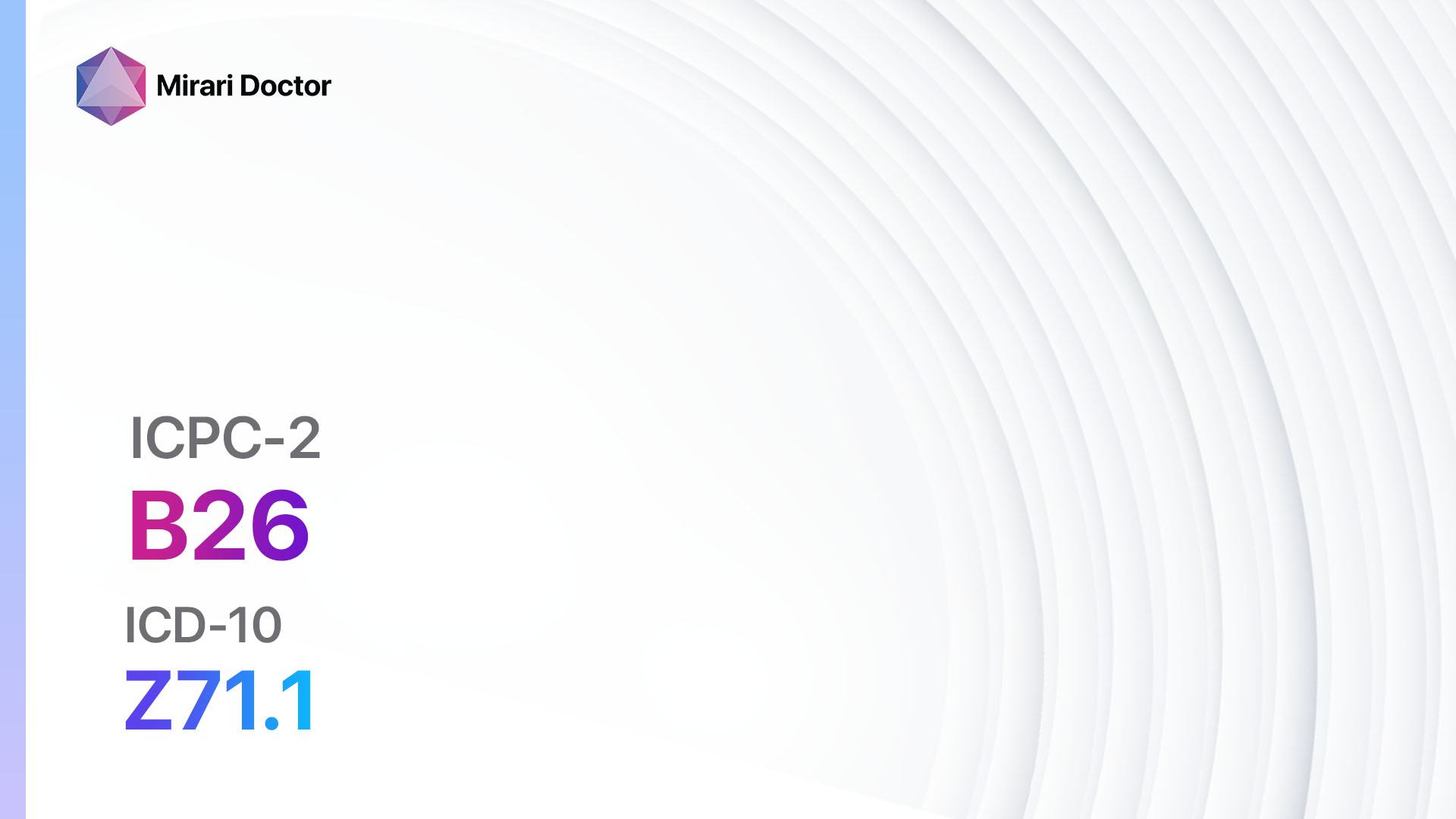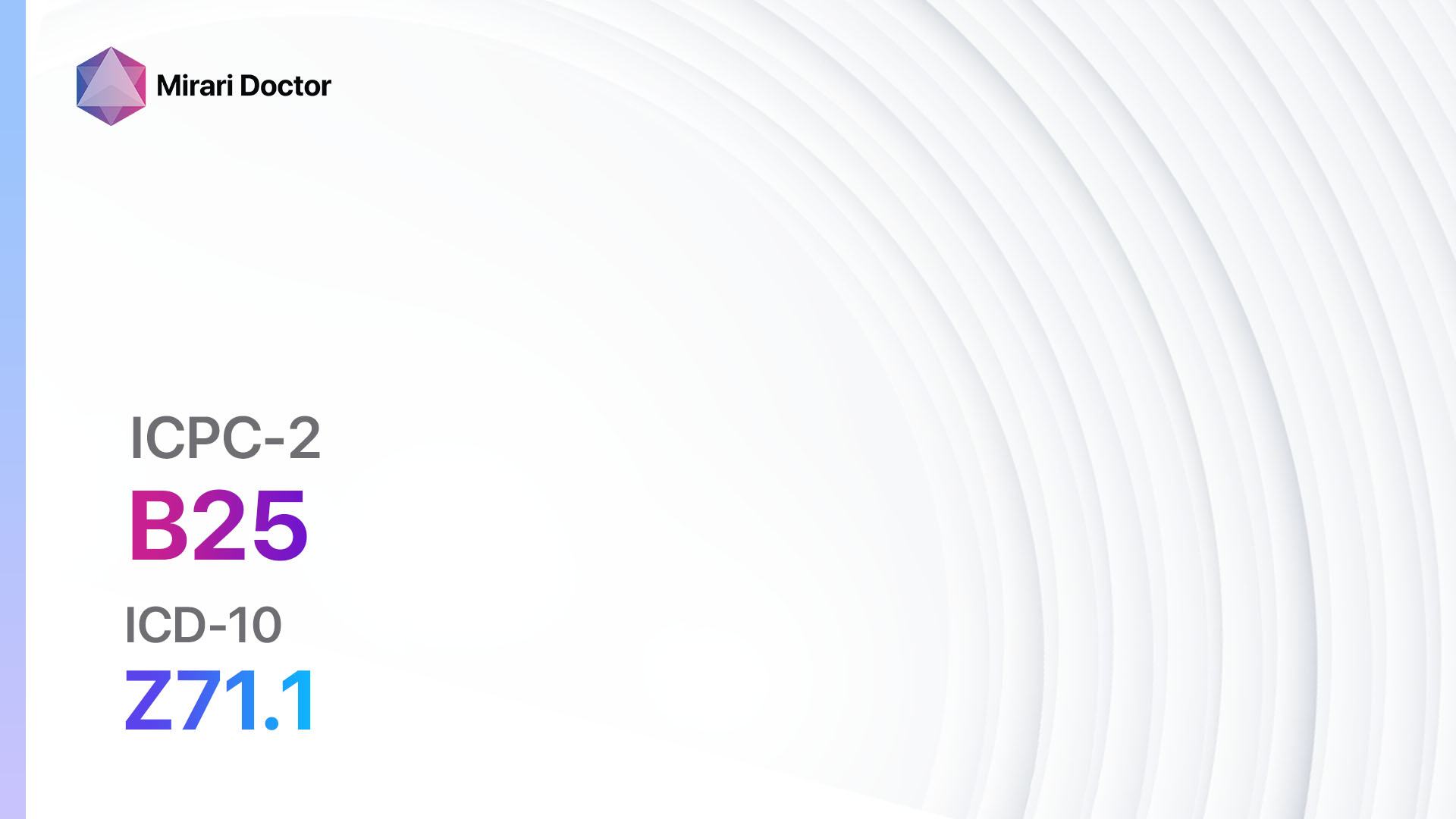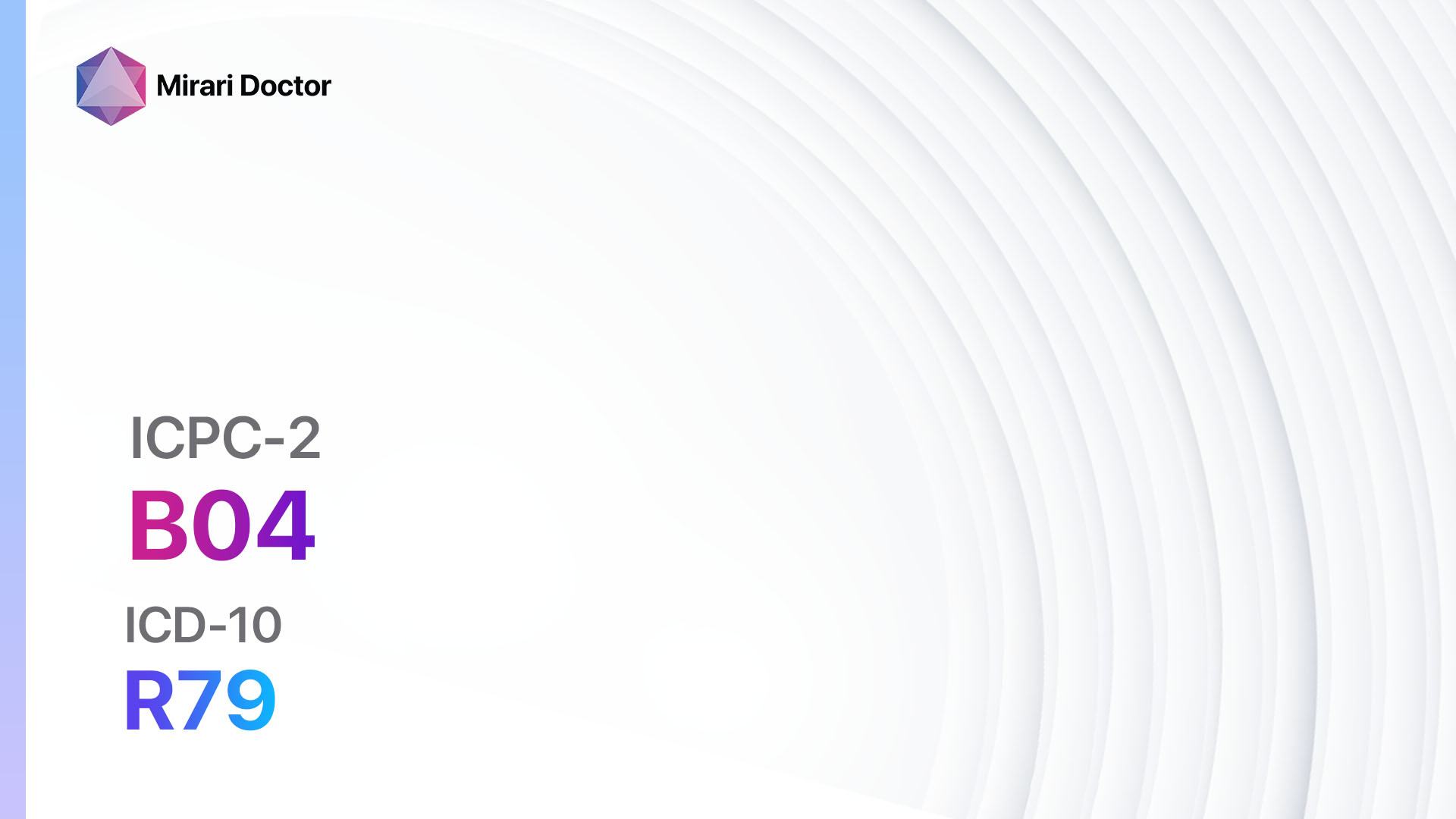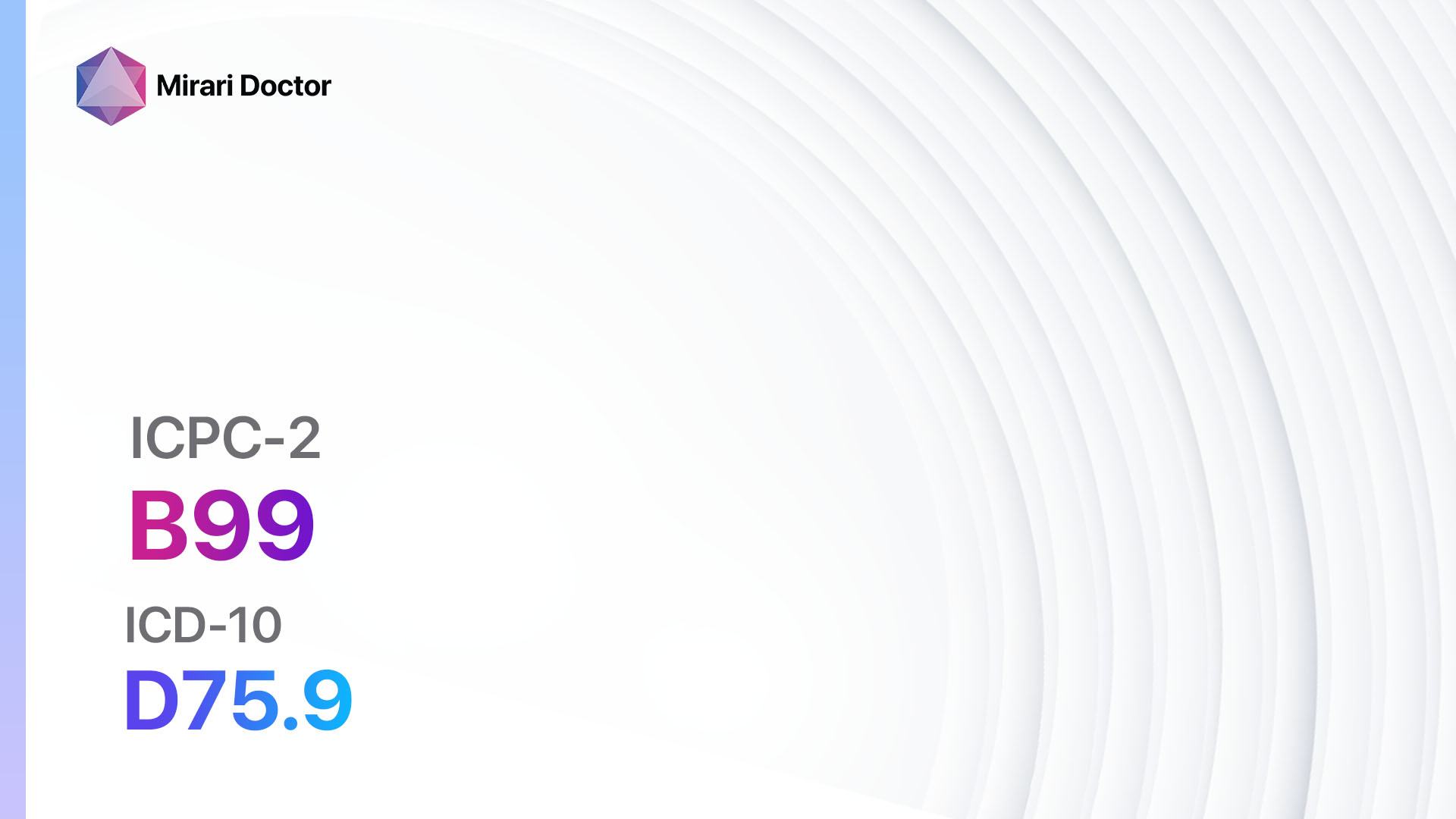
Introduction
Blood/lymph/spleen disease other (ICPC-2: B99) refers to a category of diseases that affect the blood, lymphatic system, or spleen and do not fall under any sspecific diagnosis[1]. These diseases can have various symptoms and causes, making diagnosis and treatment challenging[2]. The aim of this guide is to provide an overview of the symptoms, causes, diagnostic steps, possible interventions, and lifestyle interventions for Blood/lymph/spleen disease other (ICPC-2: B99).
Codes
- ICPC-2 Code: B99 Blood/lymph/spleen disease other
- ICD-10 Code: D75.9 Disease of blood
Symptoms
- Fatigue: Feeling tired or lacking energy[3].
- Enlarged lymph nodes: Swollen lymph nodes in the neck, armpits, or groin[3].
- Easy bruising or bleeding: Unexplained bruises or prolonged bleeding[3].
- Recurrent infections: Frequent infections or infections that take longer to resolve[3].
- Abdominal pain or discomfort: Pain or discomfort in the abdominal area[3].
- Unexplained weight loss: Losing weight without trying[3].
- Night sweats: Excessive sweating during sleep[3].
- Itchy skin: Persistent itching without a known cause[3].
- Bone pain: Pain in the bones without an injury or trauma[3].
- Shortness of breath: Difficulty breathing or feeling breathless[3].
Causes
- Infections: Viral, bacterial, or fungal infections can affect the blood, lymphatic system, or spleen[4].
- Autoimmune disorders: Conditions where the immune system mistakenly attacks healthy cells and tissues[4].
- Genetic disorders: Inherited conditions that affect the blood, lymphatic system, or spleen[4].
- Cancer: Blood cancers, such as leukemia or lymphoma, can cause symptoms related to Blood/lymph/spleen disease other (ICPC-2: B99)[4].
- Medications: Certain medications can have side effects that affect the blood, lymphatic system, or spleen[4].
- Environmental factors: Exposure to certain chemicals or toxins can contribute to the development of Blood/lymph/spleen disease other (ICPC-2: B99)[4].
Diagnostic Steps
Medical History
- Gather information about the patient’s symptoms, including their duration and severity[5].
- Ask about any previous medical conditions or treatments[5].
- Inquire about any family history of blood disorders or cancers[5].
- Assess for any potential risk factors, such as exposure to toxins or recent infections[5].
Physical Examination
- Perform a thorough physical examination, including palpation of lymph nodes, spleen, and liver[6].
- Look for signs of anemia, such as pale skin or nail beds[6].
- Check for any abnormal bruising or bleeding[6].
- Assess for any enlarged lymph nodes or masses[6].
Laboratory Tests
- Complete blood count (CBC): Measures the levels of red blood cells, white blood cells, and platelets[7].
- Blood chemistry panel: Evaluates organ function and electrolyte levels[7].
- Coagulation studies: Assess the blood’s ability to clot properly[7].
- Bone marrow biopsy: Collects a sample of bone marrow for examination under a microscope[7].
- Flow cytometry: Analyzes the characteristics of cells in the blood or bone marrow[7].
- Genetic testing: Identifies any genetic mutations or abnormalities[7].
Diagnostic Imaging
- X-rays: Can help identify any abnormalities in the bones or organs[8].
- Ultrasound: Uses sound waves to visualize the spleen, lymph nodes, or other organs[8].
- CT scan: Provides detailed cross-sectional images of the body[8].
- MRI: Uses magnetic fields and radio waves to produce detailed images of the body[8].
Other Tests
- Lymph node biopsy: Removes a sample of lymph node tissue for examination[9].
- Immunophenotyping: Identifies specific proteins on the surface of cells[9].
- Cytogenetic analysis: Examines the chromosomes for any abnormalities[9].
- Polymerase chain reaction (PCR): Detects specific genetic material, such as viral or bacterial DNA[9].
- Flow cytometry: Analyzes the characteristics of cells in the blood or bone marrow[9].
Follow-up and Patient Education
- Schedule follow-up appointments to monitor the patient’s condition and response to treatment[10].
- Provide education on the disease, its potential complications, and the importance of adherence to treatment[10].
- Encourage the patient to report any new or worsening symptoms promptly[10].
Possible Interventions
Traditional Interventions
Medications:
Top 5 drugs for Blood/lymph/spleen disease other (ICPC-2: B99):
- Corticosteroids (e.g., Prednisone, Dexamethasone):
- Cost: Generic versions can range from $5 to $50 per month.
- Contraindications: Active infections, uncontrolled diabetes, systemic fungal infections.
- Side effects: Increased appetite, weight gain, mood changes.
- Severe side effects: Increased risk of infections, osteoporosis, adrenal suppression.
- Drug interactions: Nonsteroidal anti-inflammatory drugs (NSAIDs), anticoagulants.
- Warning: Long-term use may require gradual tapering to avoid adrenal insufficiency.
- Chemotherapy agents (e.g., Cyclophosphamide, Methotrexate):
- Cost: Varies depending on the specific drug and treatment regimen.
- Contraindications: Pregnancy, severe liver or kidney disease.
- Side effects: Nausea, hair loss, increased risk of infections.
- Severe side effects: Bone marrow suppression, organ damage.
- Drug interactions: Many chemotherapy agents have potential interactions with other medications.
- Warning: Requires close monitoring of blood counts and organ function.
- Immunosuppressants (e.g., Azathioprine, Mycophenolate mofetil):
- Cost: Generic versions can range from $20 to $200 per month.
- Contraindications: Active infections, severe liver or kidney disease.
- Side effects: Nausea, diarrhea, increased risk of infections.
- Severe side effects: Bone marrow suppression, increased risk of certain cancers.
- Drug interactions: Many immunosuppressants have potential interactions with other medications.
- Warning: Requires regular monitoring of blood counts and organ function.
- Antiviral agents (e.g., Acyclovir, Valacyclovir):
- Cost: Generic versions can range from $10 to $100 per month.
- Contraindications: Hypersensitivity to the drug, severe kidney disease.
- Side effects: Nausea, headache, dizziness.
- Severe side effects: Allergic reactions, kidney damage.
- Drug interactions: Many antiviral agents have potential interactions with other medications.
- Warning: Requires regular monitoring of kidney function.
- Biologic therapies (e.g., Rituximab, Infliximab):
- Cost: Varies depending on the specific drug and treatment regimen.
- Contraindications: Active infections, severe heart failure.
- Side effects: Infusion reactions, increased risk of infections.
- Severe side effects: Severe allergic reactions, increased risk of certain cancers.
- Drug interactions: Many biologic therapies have potential interactions with other medications.
- Warning: Requires close monitoring for infusion reactions and infections.
Alternative Drugs:
- Immunomodulators (e.g., Thalidomide, Lenalidomide): Modulate the immune system to treat certain blood disorders.
- Targeted therapies (e.g., Imatinib, Ibrutinib): Specifically target cancer cells or specific proteins involved in the disease.
- Interferons (e.g., Interferon-alpha): Stimulate the immune system to fight certain blood disorders.
- Monoclonal antibodies (e.g., Alemtuzumab, Ofatumumab): Target specific cells or proteins involved in the disease.
- Hematopoietic stem cell transplantation: Replaces diseased or damaged bone marrow with healthy stem cells.
Surgical Procedures:
- Splenectomy: Surgical removal of the spleen. Cost: $10,000 to $30,000.
- Lymph node biopsy: Surgical removal of a lymph node for examination. Cost: $5,000 to $15,000.
- Bone marrow transplant: Replaces diseased or damaged bone marrow with healthy stem cells. Cost: $100,000 to $500,000.
Alternative Interventions
- Acupuncture: May help alleviate symptoms and improve overall well-being. Cost: $60 to $120 per session.
- Herbal supplements: Some herbs, such as astragalus or turmeric, may have potential benefits for the immune system. Cost: Varies depending on the specific supplement.
- Mind-body techniques: Practices like meditation, yoga, or tai chi can help reduce stress and improve immune function. Cost: Varies depending on the specific practice.
- Dietary modifications: Following a balanced diet rich in fruits, vegetables, and whole grains can support overall health. Cost: Varies depending on individual food choices.
- Exercise: Regular physical activity can improve circulation and boost the immune system. Cost: Varies depending on individual preferences and access to exercise facilities.
Lifestyle Interventions
- Stress management: Techniques such as deep breathing, meditation, or mindfulness can help reduce stress and support immune function. Cost: Varies depending on the specific practice.
- Sleep hygiene: Getting adequate sleep is essential for immune function and overall health. Cost: Varies depending on individual sleep habits and preferences.
- Healthy diet: Eating a balanced diet with plenty of fruits, vegetables, and whole grains can support overall health. Cost: Varies depending on individual food choices.
- Regular exercise: Engaging in regular physical activity can improve circulation and boost the immune system. Cost: Varies depending on individual preferences and access to exercise facilities.
- Avoiding exposure to toxins: Minimizing exposure to chemicals or pollutants can help reduce the risk of developing blood, lymph, or spleen diseases. Cost: Varies depending on individual circumstances.
It is important to note that the cost ranges provided are approximate and may vary depending on the location and availability of the interventions. It is recommended to consult with a healthcare professional for personalized treatment options and cost estimates.
Mirari Cold Plasma Alternative Intervention
Understanding Mirari Cold Plasma
- Safe and Non-Invasive Treatment:Mirari Cold Plasma is a safe and non-invasive treatment option for various skin conditions. It does not require incisions, minimizing the risk of scarring, bleeding, or tissue damage.
- Efficient Extraction of Foreign Bodies:Mirari Cold Plasma facilitates the removal of foreign bodies from the skin by degrading and dissociating organic matter, allowing easier access and extraction.
- Pain Reduction and Comfort:Mirari Cold Plasma has a local analgesic effect, providing pain relief during the treatment, making it more comfortable for the patient.
- Reduced Risk of Infection:Mirari Cold Plasma has antimicrobial properties, effectively killing bacteria and reducing the risk of infection.
- Accelerated Healing and Minimal Scarring: Mirari Cold Plasma stimulates wound healing and tissue regeneration, reducing healing time and minimizing the formation of scars.
Mirari Cold Plasma Prescription
Video instructions for using Mirari Cold Plasma Device – B99 Blood/lymph/spleen disease other (ICD-10:D75.9)
| Mild | Moderate | Severe |
| Mode setting: 1 (Infection) Location: 3 (Kidney, Liver & Spleen) Morning: 15 minutes, Evening: 15 minutes | Mode setting: 1 (Infection) Location: 3 (Kidney, Liver & Spleen) Morning: 30 minutes, Lunch: 30 minutes, Evening: 30 minutes | Mode setting: 1 (Infection) Location: 3 (Kidney, Liver & Spleen) Morning: 30 minutes, Lunch: 30 minutes, Evening: 30 minutes |
| Mode setting: 2 (Wound Healing) Location: 3 (Kidney, Liver & Spleen) Morning: 15 minutes, Evening: 15 minutes | Mode setting: 2 (Wound Healing) Location: 3 (Kidney, Liver & Spleen) Morning: 30 minutes, Lunch: 30 minutes, Evening: 30 minutes | Mode setting: 2 (Wound Healing) Location: 3 (Kidney, Liver & Spleen) Morning: 30 minutes, Lunch: 30 minutes, Evening: 30 minutes |
| Mode setting: 7 (Immunotherapy) Location: 7 (Neuro system & ENT) Morning: 15 minutes, Evening: 15 minutes | Mode setting: 7 (Immunotherapy) Location: 7 (Neuro system & ENT) Morning: 30 minutes, Lunch: 30 minutes, Evening: 30 minutes | Mode setting: 7 (Immunotherapy) Location: 7 (Neuro system & ENT) Morning: 30 minutes, Lunch: 30 minutes, Evening: 30 minutes |
| Total Morning: 45 minutes approx. $7.50 USD, Evening: 45 minutes approx. $7.50 USD | Total Morning: 90 minutes approx. $15 USD, Lunch: 90 minutes approx. $15 USD, Evening: 90 minutes approx. $15 USD | Total Morning: 90 minutes approx. $15 USD, Lunch: 90 minutes approx. $15 USD, Evening: 90 minutes approx. $15 USD |
| Usual treatment for 7-60 days approx. $105 USD – $900 USD | Usual treatment for 6-8 weeks approx. $1,890 USD – $2,520 USD | Usual treatment for 3-6 months approx. $4,050 USD – $8,100 USD |
 |
|
Use the Mirari Cold Plasma device to treat Blood/lymph/spleen disease other effectively.
WARNING: MIRARI COLD PLASMA IS DESIGNED FOR THE HUMAN BODY WITHOUT ANY ARTIFICIAL OR THIRD PARTY PRODUCTS. USE OF OTHER PRODUCTS IN COMBINATION WITH MIRARI COLD PLASMA MAY CAUSE UNPREDICTABLE EFFECTS, HARM OR INJURY. PLEASE CONSULT A MEDICAL PROFESSIONAL BEFORE COMBINING ANY OTHER PRODUCTS WITH USE OF MIRARI.
Step 1: Cleanse the Skin
- Start by cleaning the affected area of the skin with a gentle cleanser or mild soap and water. Gently pat the area dry with a clean towel.
Step 2: Prepare the Mirari Cold Plasma device
- Ensure that the Mirari Cold Plasma device is fully charged or has fresh batteries as per the manufacturer’s instructions. Make sure the device is clean and in good working condition.
- Switch on the Mirari device using the power button or by following the specific instructions provided with the device.
- Some Mirari devices may have adjustable settings for intensity or treatment duration. Follow the manufacturer’s instructions to select the appropriate settings based on your needs and the recommended guidelines.
Step 3: Apply the Device
- Place the Mirari device in direct contact with the affected area of the skin. Gently glide or hold the device over the skin surface, ensuring even coverage of the area experiencing.
- Slowly move the Mirari device in a circular motion or follow a specific pattern as indicated in the user manual. This helps ensure thorough treatment coverage.
Step 4: Monitor and Assess:
- Keep track of your progress and evaluate the effectiveness of the Mirari device in managing your Blood/lymph/spleen disease other. If you have any concerns or notice any adverse reactions, consult with your health care professional.
Note
This guide is for informational purposes only and should not replace the advice of a medical professional. Always consult with your healthcare provider or a qualified medical professional for personal advice, diagnosis, or treatment. Do not solely rely on the information presented here for decisions about your health. Use of this information is at your own risk. The authors of this guide, nor any associated entities or platforms, are not responsible for any potential adverse effects or outcomes based on the content.
Mirari Cold Plasma System Disclaimer
- Purpose: The Mirari Cold Plasma System is a Class 2 medical device designed for use by trained healthcare professionals. It is registered for use in Thailand and Vietnam. It is not intended for use outside of these locations.
- Informational Use: The content and information provided with the device are for educational and informational purposes only. They are not a substitute for professional medical advice or care.
- Variable Outcomes: While the device is approved for specific uses, individual outcomes can differ. We do not assert or guarantee specific medical outcomes.
- Consultation: Prior to utilizing the device or making decisions based on its content, it is essential to consult with a Certified Mirari Tele-Therapist and your medical healthcare provider regarding specific protocols.
- Liability: By using this device, users are acknowledging and accepting all potential risks. Neither the manufacturer nor the distributor will be held accountable for any adverse reactions, injuries, or damages stemming from its use.
- Geographical Availability: This device has received approval for designated purposes by the Thai and Vietnam FDA. As of now, outside of Thailand and Vietnam, the Mirari Cold Plasma System is not available for purchase or use.
References
- World Health Organization. (2016). International Classification of Primary Care, Second edition (ICPC-2). //www.who.int/standards/classifications/other-classifications/international-classification-of-primary-care
- Bain, B. J. (2017). Diagnosis from the Blood Smear. New England Journal of Medicine, 377(5), 498-507. //doi.org/10.1056/nejmra1603008
- National Heart, Lung, and Blood Institute. (n.d.). Blood Disorders. //www.nhlbi.nih.gov/health-topics/blood-disorders
- Bunn, H. F. (2011). Approach to the Anemias. In Goldman’s Cecil Medicine (Twenty Fourth Edition) (pp. 1031-1039). W.B. Saunders. //doi.org/10.1016/B978-1-4377-1604-7.00161-3
- Marks, P. W. (2018). Approach to Anemia in the Adult and Child. In Hematology (Seventh Edition) (pp. 418-426). Elsevier. //doi.org/10.1016/B978-0-323-35762-3.00034-5
- Hsi, E. D. (2018). Hematopathology (Third Edition). Elsevier. //doi.org/10.1016/C2015-0-00175-2
- Kaushansky, K., Lichtman, M. A., Prchal, J. T., Levi, M. M., Press, O. W., Burns, L. J., & Caligiuri, M. (2021). Williams Hematology (Tenth Edition). McGraw Hill.
- Gaddey, H. L., & Riegel, A. M. (2016). Unexplained Lymphadenopathy: Evaluation and Differential Diagnosis. American Family Physician, 94(11), 896-903. //www.aafp.org/pubs/afp/issues/2016/1201/p896.html
- Cheson, B. D., Fisher, R. I., Barrington, S. F., Cavalli, F., Schwartz, L. H., Zucca, E., & Lister, T. A. (2014). Recommendations for Initial Evaluation, Staging, and Response Assessment of Hodgkin and Non-Hodgkin Lymphoma: The Lugano Classification. Journal of Clinical Oncology, 32(27), 3059-3067. //doi.org/10.1200/JCO.2013.54.8800
- Eichhorst, B., Robak, T., Montserrat, E., Ghia, P., Niemann, C. U., Kater, A. P., Gregor, M., Cymbalista, F., Buske, C., Hillmen, P., Hallek, M., & Mey, U. (2021). Chronic lymphocytic leukaemia: ESMO Clinical Practice Guidelines for diagnosis, treatment and follow-up. Annals of Oncology, 32(1), 23-33. //doi.org/10.1016/j.annonc.2020.09.019
Related articles
Made in USA


